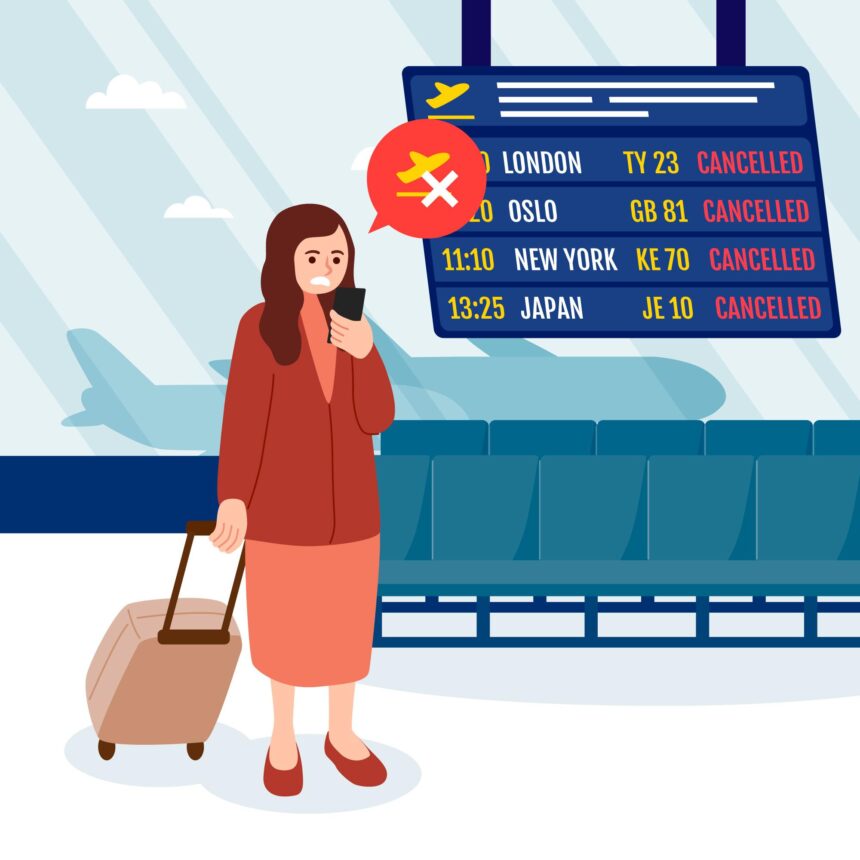Introduction
On July 20, 2025, United Airlines Flight UA770 was forced to make an emergency diversion. This unexpected situation caught the attention of many passengers and aviation enthusiasts alike. In this article, we’ll break down the details of the incident, its impact on passengers, and guide how to stay informed during such situations. The aim is to provide factual, real-time updates while adhering to safety protocols and guidelines.
United Airlines Flight UA770 – Flight Details
United Airlines Flight UA770 was scheduled to fly from Los Angeles International Airport (LAX) to New York John F. Kennedy International Airport (JFK), covering a distance of approximately 2,450 miles and an estimated flight time of 5 hours. The aircraft used for this journey was a Boeing 777, a common plane for medium-haul international flights.
The flight took off as scheduled, but around 3 hours into the flight, reports started circulating that the flight was being diverted due to an emergency. At this point, details remained limited, and speculation arose about the cause.
The diversion took place near Denver International Airport (DEN), and the aircraft was rerouted to Denver International Airport. At this stage, official updates were sparse, and many passengers were left uncertain about what was happening.
What Happened During the Emergency Diversion?
The cause of Flight UA770’s emergency diversion is yet to be fully clarified, but early reports suggest that a technical issue prompted the diversion. It’s essential to note that emergency diversions are not uncommon, and they are performed to ensure the safety of passengers and crew, reassuring the audience about the safety measures taken.
Timeline of Events:
- Departure: Flight UA770 took off at 10:00 AM (PDT), heading towards New York JFK.
- Diversion: Approximately 3 hours after takeoff, the flight crew decided to divert the plane.
- Landing: The aircraft safely landed at Denver International Airport (DEN) at 1:00 PM (PDT). Authorities confirmed that there were no significant injuries, and all passengers were safe.
For more information on aviation emergency protocols, you can read about them on Wikipedia’s Aviation Safety page.
United Airlines’ Response to the Incident
United Airlines responded swiftly to the emergency. The airline issued a brief statement confirming the emergency diversion, emphasizing the safety of all passengers and crew members. According to the airline, all necessary steps were taken to ensure that the flight was diverted to the nearest suitable airport for an emergency landing, providing a sense of security to all involved.
Actions Taken by the Crew:
The crew, demonstrating their professionalism, followed standard emergency protocols. Passengers were instructed to remain calm, and the flight attendants ensured that all safety measures were adhered to during the diversion.
Alternative Arrangements for Passengers:
After landing, United Airlines began coordinating alternative travel arrangements for the affected passengers. Depending on the nature of the diversion, passengers were either rebooked on the next available flights or provided with accommodations and meals if the delay was significant. United Airlines maintained constant communication with passengers, providing timely updates on their next steps.
How Emergency Diversions Affect Flights
An emergency diversion occurs when a flight must be rerouted to another airport due to safety concerns. While rare, these diversions are crucial for protecting passengers and crew members. Various factors contribute to diversions, including medical emergencies, technical problems, or severe weather conditions.
Factors Leading to Emergency Diversions:
- Technical Malfunctions: The aircraft may experience a malfunction in critical systems, such as the engines, hydraulics, or electrical systems, necessitating an emergency landing.
- Weather Conditions: Severe weather such as thunderstorms, heavy turbulence, or poor visibility can make it unsafe to continue on the original flight path.
- Medical Emergencies: In some cases, a passenger or crew member may need urgent medical attention, prompting a diversion to the nearest medical facility.
Passenger Experience During a Diversion:
While diversions are unsettling, it’s essential to remember that they are done for safety reasons. Passengers may experience delays and inconvenience, but airlines like United Airlines work diligently to mitigate these disruptions by offering support, including rebooking and accommodations.
You can learn more about flight diversions and how they are handled in various situations on the Wikipedia page about Emergency Landings.
Real-Time Status Updates: How to Stay Informed
In situations like these, staying informed is crucial for both passengers on board and their loved ones. Here are some ways to monitor Flight UA770’s status and receive real-time updates:
Checking Flight Status:
- United Airlines Website and App: Passengers and their families can check the flight status on the official United Airlines website or through the mobile app.
- Flight Tracking Websites: Websites like FlightAware and FlightRadar24 allow users to track flights in real-time, including information on diversions, delays, and arrivals.
Social Media Updates:
- Official Social Media Accounts: United Airlines actively updates passengers through their official social media profiles, particularly on Twitter. Following these accounts can provide valuable, up-to-the-minute information on the flight’s status.
Local News Reports:
- In certain circumstances, local news channels or online news websites may report on flight diversions, especially if the situation involves significant delays or emergencies.
Conclusion
Flight diversions, although uncommon, are an essential part of aviation safety. United Airlines Flight UA770’s emergency diversion highlights the importance of taking swift action to ensure the safety of passengers and crew. While such incidents can cause delays, it is crucial to remember that these decisions are made with the utmost concern for the safety and well-being of everyone on board. Passengers affected by the diversion are encouraged to remain patient, as alternative travel arrangements are often made promptly. By staying updated through official channels and trusted sources, passengers can stay informed about the status of their flights and any necessary actions they need to take.






